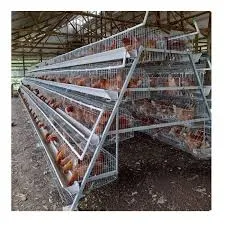feed pelleting machine
Oct . 11, 2024 17:17 Back to list
feed pelleting machine
Understanding Feed Pelleting Machines A Key Component in Animal Nutrition
Feed pelleting machines play a crucial role in modern animal husbandry, specifically in the production of animal feed. This technology has drastically transformed the way livestock is fed, ensuring that animals receive their nutrients in a convenient and digestible form. This article will explore the significance, functionality, and benefits of feed pelleting machines in the agricultural sector.
The Importance of Feed Pelleting
Animal nutrition is a cornerstone of successful livestock production. Nutrients must be effectively delivered to animals to promote growth, reproduction, and overall health. Traditional methods of feeding, such as loose grains or mash feeds, often fail to provide these essential nutrients in an efficient manner. This is where feed pelleting comes into play.
Pelleting compresses various feed ingredients into small, dense pellets. This process not only improves the nutrient density of the feed but also enhances its palatability, making it more appealing to animals. Moreover, the uniform size of the pellets ensures that every animal receives a consistent amount of nutrients, which is particularly important in commercial farming settings.
The Functionality of Feed Pelleting Machines
Feed pelleting machines operate through a series of steps. Firstly, raw ingredients—such as grains, proteins, vitamins, and minerals—are received and ground into a fine meal. This grinding process is essential as it increases the surface area of the feed ingredients, allowing for improved mixing and pellet formation.
Once the feed is ground, it is mixed thoroughly to ensure all components are evenly distributed. The next step involves conditioning the feed mixture, where steam or moisture is added to soften the ingredients. This conditioning process enhances the binding properties of the feed, ensuring that the pellets maintain their shape after being formed.
Following conditioning, the feed mixture is fed into the pellet mill, where it is forced through a die under high pressure and temperature. The mechanical action of the die shapes the feed into pellets while the heat helps to gelatinize starches and kill pathogens, improving the feed's safety and digestibility. The resulting pellets are then cooled and dried before being packaged for distribution.
feed pelleting machine

Benefits of Using Feed Pelleting Machines
The use of feed pelleting machines offers several significant advantages
1. Enhanced Nutrient Absorption The pelleting process improves the digestibility of the feed. Animals can absorb nutrients more effectively from pelleted feed compared to loose feed, leading to better growth rates and overall health.
2. Reduced Feed Wastage Pelleted feed tends to produce less waste than traditional feed forms. The compact size and shape reduce spillage and ensure that more feed is consumed rather than left uneaten.
3. Improved Feed Storage and Handling Pellets are easier to store and handle compared to loose feed. They take up less space and can be stacked more easily, simplifying inventory management for farmers.
4. Better Biosecurity The high temperatures used during pelleting kill harmful pathogens and pests, making pelleted feed safer for animal consumption. This is particularly important in large-scale agricultural operations where biosecurity is a concern.
5. Cost-Effectiveness Although the initial investment in a feed pelleting machine can be significant, the long-term savings on feed efficiency and reduced waste often justify the expense. Additionally, the improved health and productivity of livestock can lead to higher profits.
Conclusion
Feed pelleting machines are an indispensable tool in the field of animal nutrition. By transforming raw ingredients into nutrient-dense pellets, these machines enhance the health and productivity of livestock. The benefits of feed pelleting, including improved nutrient absorption, reduced wastage, and better biosecurity, make a compelling case for their use in modern agricultural practices. As the global demand for animal products continues to grow, the importance of efficient and effective feeding strategies will only increase, further solidifying the role of feed pelleting machines in the industry. Embracing such technologies is essential for farmers looking to advance their operations and meet the nutritional needs of their livestock.
-
Automatic Feeding Line System-Pan Feeder Nipple Drinker|Anping County Yize Metal Products Co., Ltd.
NewsJul.29,2025
-
Hot Sale 24 & 18 Door Rabbit Cages - Premium Breeding Solutions
NewsJul.25,2025
-
Automatic Feeding Line System Pan Feeder Nipple Drinker - Anping County Yize Metal Products Co., Ltd.
NewsJul.21,2025
-
Automatic Feeding Line System Pan Feeder Nipple Drinker - Anping County Yize Metal Products Co., Ltd.
NewsJul.21,2025
-
Automatic Feeding Line System - Anping Yize | Precision & Nipple
NewsJul.21,2025
-
Automatic Feeding Line System - Anping Yize | Precision & Nipple
NewsJul.21,2025






